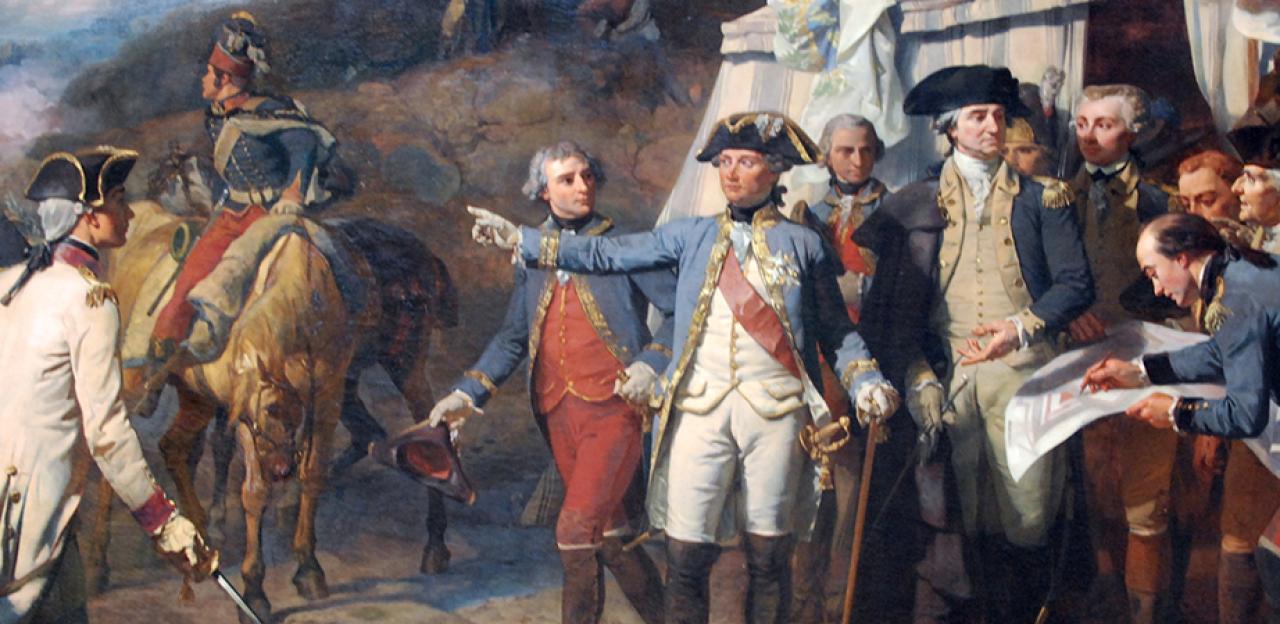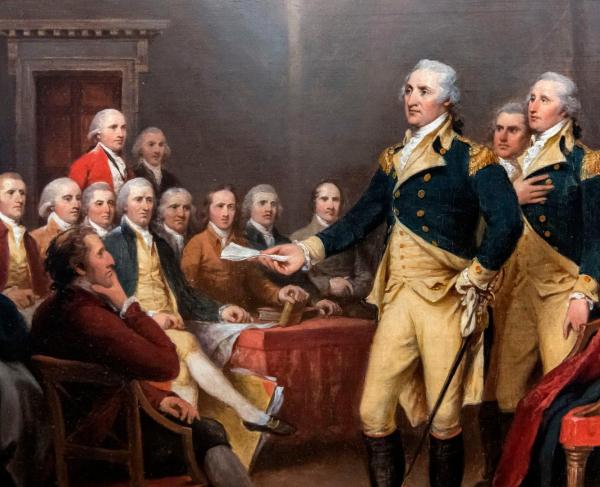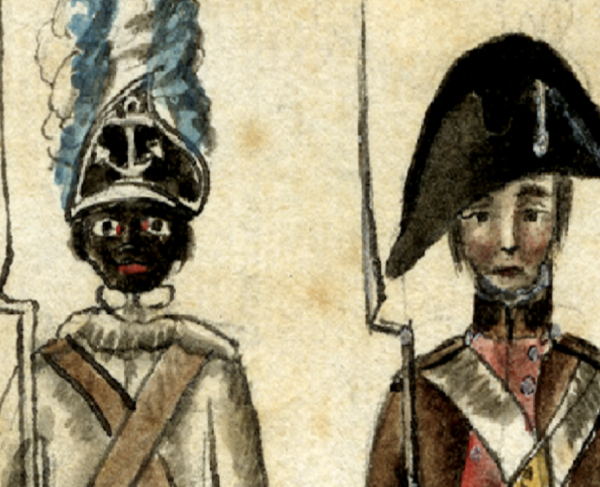Revolutionary War Yorktown

With his back to the York River, British General Charles Lord Cornwallis intended to resupply and refit his 9,000 man army in the fall of 1781. Sensing an opportunity, General George Washington’s Continental Army, close to 20,000 strong, now reinforced by several thousand French troops led by Comte de Rochambeau, opted to lay siege to Cornwallis’s Army. After a grueling forced march beginning in New York, the Franco-American army arrived near Yorktown, Virginia on September 28 and immediately began the hard work of laying siege to Cornwallis and his men.
Cornwallis had thrown up a series of redoubts on the outskirts of Yorktown while the majority of his men hunkered down in the town. When the American and French army arrived at Yorktown the French secured the left flank and the Americans the right. The Royal Navy had intended to sail up the Chesapeake Bay in order to provide supplies and much needed reinforcements to the encircled Cornwallis, however, no such aid materialized. On September 5, the British aid and resupply fleet was met by French warships at Battle of the Capes, was heavily defeated, and was furthermore forced to abandon the British Army at Yorktown. Cornwallis was trapped.
With the help of French engineers, American and French troops began to dig a series of parallel trenches which brought troops and artillery close enough to inflict damage on the British. Feverishly working night and day, soldiers of the combined forces employed spades and axes to create a perimeter line of trenches that would encircle the British. British deserters alerted the Allies that British morale inside Yorktown was low. As the work on the parallels continued, the British attempted to disrupt Allied operations by using what little artillery they had left. Their attempts proved futile.
On October 7, the Allied lines were now within musket range of the British. Two days later American and French artillery were in place. On the afternoon of October 9 the Allied barrage began, with the French opening the salvo. On the American side, George Washington touched off the first American canon to commence their assault. The American artillery consisted of three twenty-four pounders, three eighteen pounders, two eight-inch (203 mm) howitzers and six mortars, totaling fourteen guns. For near a week the artillery barrage was ceaseless, shattering whatever nerve the British had remaining and punching holes in British defenses. Deliberately firing all night, Washington’s forces pounded the British in an effort to prevent them from repairing their damages.
On October 11, Washington ordered that a second parallel be dug 400 yards closer to the British lines. British redoubts #9 and #10 prevented the second parallel from being dug to the river and the British were still able to reinforce the garrisons inside the redoubts. They would have to be taken by force. The new line was in place by the morning of October 12.
On the evening of October 14, after incessant artillery pounding to weaken their defenses, American and French forces assaulted Redoubts #9 and #10. Washington chose to launch the attack on a moonless night adding to the element of surprise. Soldiers were told not to load or prime their weapons so as not to alert the enemy. The password for the assault was “Rochambeau,” which the Americans translated as “Rush on boys!”
The operation commenced with a diversionary attack on a redoubt further to the north of Yorktown at 6:30 pm, giving the appearance that the town itself was to be stormed. Then, Alexander Hamilton's force consisting of a detachment of 400 of his light infantry, assaulted redoubt #10 with bayonets fixed and muskets unloaded. To first clear the way for the main body of Hamilton's attack, sappers were ordered to remove the wooden obstacles the British had placed on the forward slopes of the redoubt. Also, to prevent the British defenders from escaping the coming onslaught, Hamilton dispatched troops under Lt. Col. John Laurens to cover the rear of the redoubt.
As American troops hacked at the abatis with axes the British were alerted. A British sentry fired at the Americans and the Americans proceeded to assault the fortification, climbing over the parapet and descending into the redoubt. Serious fighting ensued in close quarters, but the British were overwhelmed. It was a stunning victory with the Americans sustaining only 34 casualties.
The French had simultaneously assaulted Redoubt #9 and after an equally fierce firefight, they also wrested control of the position from the British.
Cornwallis’s position was now untenable as the Franco-American alliance had artillery on three of his sides, with additional new pieces positioned in redoubts #9 and #10 after their fall. In a last ditch effort, Cornwallis ordered a futile counterattack on October 15 which failed miserably.
On the morning of October 17, a lone British drummer boy, beating “parley” and British officer waving a white handkerchief tied to the end of a sword were seen on a parapet at the forward position of the British lines. Blindfolded and brought inside American lines, the British officer secured terms of surrender for the British Army.
Two days later on October 19, 1781 in a field outside of Yorktown the capitulation took place as British troops and their Hessian allies with flags furled and cased marched sullenly between contingents of American and French forces. The British sought honorable terms of surrender, but Washington refused as American forces were denied the same honor in Charleston, South Carolina earlier in the war. Legend has it that the British band played the nursery tune, “The World’s Turned Upside Down” as they surrendered. That legend has become part of American folklore, but the world changed that day as the military operations of the War for Independence ceased. Two year later in 1783 that the British would abandon New York City and Washington’s forces would victoriously enter that city. The war was over and a new nation born.


